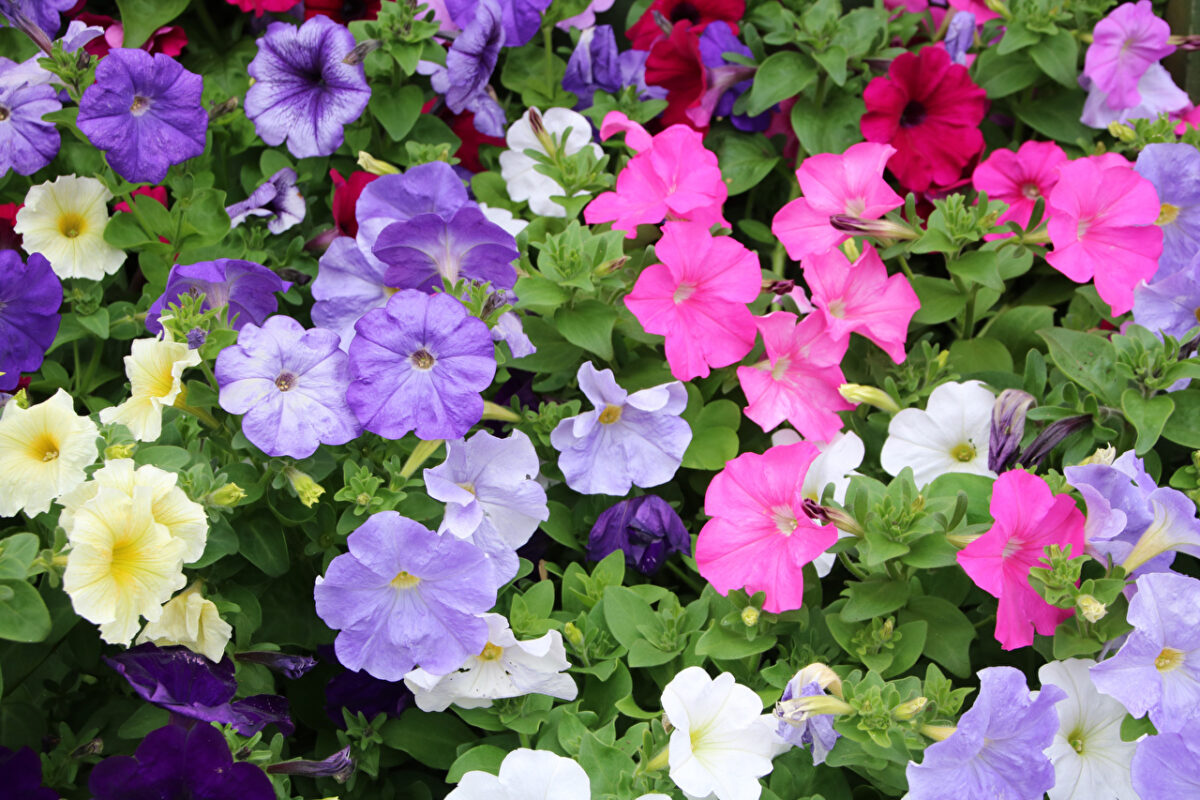How to Plant Petunias
Growing petunia plants from seeds can be a rewarding and enjoyable experience for any gardening enthusiast. Here are some key steps to successfully grow petunias from seeds:
- Start with quality seeds: Purchase fresh and high-quality petunia seeds from a garden center. Look for varieties that suit your preferences, such as trailing or upright petunias.
- Prepare the soil: Petunias thrive in well-drained soil with a pH level between 6.0 and 7.5. Ensure the soil is loose, fertile, and free of any debris or weeds.
- Sow the seeds: Sow the petunia seeds directly into seed trays or small pots filled with seed-starting mix. Gently press the seeds into the surface of the soil, ensuring they are not buried too deep.
- Provide optimal conditions: Place the seed trays in a warm location with plenty of sunlight or under grow lights if indoors. Petunia seeds require temperatures between 70-75°F (21-24°C) to germinate successfully.
- Watering and care: Keep the soil consistently moist but not waterlogged during germination and early growth stages. Once seedlings emerge, provide regular watering while allowing the top inch of soil to dry out between watering.
- Transplanting: When seedlings have developed their second set of true leaves, they are ready to be transplanted into larger containers or directly into your garden bed after all frost risks have passed.
- Provide proper spacing: Space petunia plants according to their specific variety requirements, typically around 12-18 inches apart to allow for adequate air circulation and growth.
- Fertilize regularly: Feed your growing petunias every two weeks with a balanced water-soluble fertilizer to promote healthy foliage and abundant blooms throughout the growing season.
- Maintain pest control: Monitor your plants regularly for common pests such as aphids or snails. Implement appropriate pest control measures if necessary, using organic methods whenever possible.
- Enjoy the blooms: With proper care and attention, your petunia plants will reward you with vibrant and colorful blooms that will brighten up your garden or containers throughout the summer months.
Types of Petunias
Grandiflora Petunias
Grandiflora Petunias are known for their large, showy flowers. They typically have fewer blooms per plant compared to other varieties but make up for it with their stunning size and vibrant colors. These petunias are great for adding a focal point in the garden or creating eye-catching displays in containers.
Multiflora Petunias
Multiflora Petunias produce an abundance of smaller flowers per plant. They may not have the same size as Grandiflora Petunias, but they make up for it with their profuse blooming habit. These petunias are perfect for creating a carpet of color in flower beds or filling hanging baskets with cascades of blossoms.
Surfinia petunias
Surfinia petunias are a popular choice for those looking to add a splash of vibrant color to their outdoor spaces. These trailing petunias are known for their stunning blooms that cascade down from hanging baskets, creating a visually striking display. Surfinia petunias in hanging baskets are an excellent choice. With their stunning blooms, low maintenance needs, and ability to thrive in various conditions.
Wave Petunias
Wave Petunias are known for their vigorous trailing growth habit and ability to spread up to 4 feet wide. They produce an abundance of medium-sized flowers and are often used as ground covers or in hanging baskets where they can trail beautifully over the edges.
Petunia Care
Caring for a petunia plant doesn’t have to be complicated. With a few simple steps, you can ensure that your petunias thrive and bloom beautifully. Here are some essential tips to keep in mind:
- Sunlight: Petunias love sunlight and require at least 6-8 hours of direct sunlight every day. Choose a sunny spot in your garden or place them in containers where they can receive ample light.
- Watering: While petunias enjoy sunlight, they also require regular watering to keep their soil moist. Water them deeply, ensuring the water reaches the root system. Avoid overwatering as it can lead to root rot.
- Fertilizing: Petunias benefit from regular feeding with a balanced fertilizer every 2-3 weeks during the growing season. This will provide them with the necessary nutrients for healthy growth and vibrant blooms.
- Deadheading: To encourage continuous blooming, remove faded or wilted flowers by pinching or cutting them off at the base of the stem. This process, known as deadheading, stimulates new flower production.
- Pruning: If your petunias become leggy or overgrown, you can trim them back by one-third to promote bushier growth and more compact plants.
- Pests and diseases: Keep an eye out for common pests like aphids or fungal diseases such as powdery mildew. Regularly inspect your plants and take appropriate measures if any issues arise.
By following these care tips, you can enjoy a flourishing display of colorful petunias throughout the growing season. Remember to observe your plants closely and adjust care practices accordingly based on their specific needs and environmental conditions.
